Science Highlights, October 15, 2015
Awards and Recognition
Materials Physics and Applications
High-speed fiber Bragg grating measurement of extreme material dynamics
Awards and Recognition
American Physical Society names new Fellows
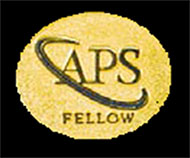
Ten Los Alamos scientists have been elected as Fellows to the American Physical Society (APS) for 2015. Selection as a Fellow recognizes exceptional contributions to the physics enterprise, such as outstanding physics research, important applications of physics, leadership in or service to physics, or significant contributions to physics education. Fellowship is a distinct honor signifying recognition by one’s professional peers. More information regarding American Physical Society Fellows: http://www.aps.org/programs/honors/fellowships/
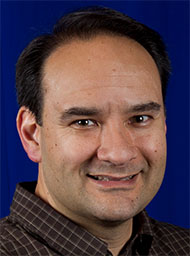
Tariq Aslam
Tariq Aslam (Shock and Detonation Physics, M-9) was cited “For groundbreaking contributions to the computational physics of detonations and shock waves, including co-inventing the ghost fluid method, mapped weighted essentially non-oscillatory schemes, Runge-Kutta-Legendre time integration, and applications of level set methods.” The APS Topical Group on Shock Compression of Condensed Matter nominated him. Aslam received a PhD in Theoretical and Applied Mechanics from the University of Illinois at Urbana-Champaign. He joined the Lab as a graduate research assistant in 1994, became a postdoctoral fellow in 1996, and was converted to staff. Aslam models high explosive response and devises novel numerical methodologies to solve problems in shock and detonation physics. Other awards include the William Penney Fellowship, Los Alamos Awards Program recognition, and NNSA Defense Programs Awards of Excellence.
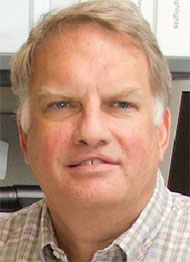
Steve Batha
Steve Batha (Physics Division, P-DO) was cited “For pioneering investigations of forward scattering laser-plasma instabilities, hydrodynamic instabilities in high-energy density physics regimes, and leadership of high-energy-density research.” The APS Division of Plasma Physics nominated him. He earned a PhD in mechanical and aerospace sciences from the University of Rochester and joined the Laboratory in 1998 as a staff scientist in Plasma Physics (P-24). Batha is program manager of the Inertial Confinement Fusion and High Yield Campaign, overseeing studies of physics processes important for weapons science. He has served on numerous review committees for the Stockpile Stewardship Academic Alliance, National Laser User Facility, and other high-energy-density physics programs. Batha has received two NNSA Defense Program Awards of Excellence for neutron imaging diagnostics.
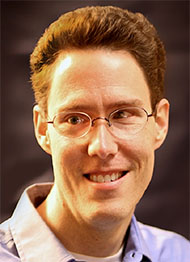
Eric Bauer
Eric Bauer (Condensed Matter and Magnet Science, MPA-CMMS) was cited “For outstanding and original contributions to the discovery and understanding of correlated electron systems, specifically for the study of complex electronic states hosted by correlated actinide and rare-earth materials.” The APS Division of Materials Physics nominated him. He received a PhD in physics from the University of California – San Diego and joined the Lab in 2002 as a Director’s Postdoctoral Researcher. He currently leads the Strongly Correlated Electron Team within MPA-CMMS. He synthesizes correlated f- and d-electron materials including single crystal growth of lanthanide and actinide compounds by the molten-metal flux, Bridgman, vapor-transport and Czochralski techniques. He also investigates new unconventional superconductors, understanding quantum criticality and discovery of novel states of matter near quantum critical points, and examines the localized/itinerant crossover in the actinides through synthesis of single crystals of plutonium compounds and x-ray absorption spectroscopy techniques. He won a 2009 Presidential Early Career Award for Scientists and Engineers.
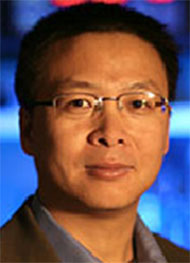
Hou-Tong Chen
Hou-Tong Chen (Center for Integrated Nanotechnologies, MPA-CINT) was cited “For contributions to the development of active metamaterials and devices, and the development and understanding of few-layer metamaterials and metasurfaces, especially in the terahertz frequency range.” The APS Division of Laser Science nominated him. Chen earned a PhD in physics from Rensselaer Polytechnic Institute and joined the Lab as a postdoctoral researcher in 2005. He has made great advances in active and dynamic terahertz metamaterials. Now he studies metamaterials in the optical frequency range. Chen seeks to engineer and control the response of flat optics, which employ flat lenses made of metamaterials instead of conventional curved lenses. He also explores how integration of functional materials could make metamaterials for optoelectronic applications. Chen holds two patents and has received two Los Alamos Awards Program recognitions.
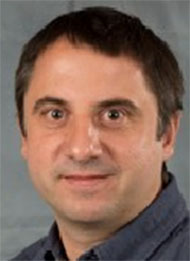
Diego Dalvit
Diego Dalvit (Physics of Condensed Matter and Complex Systems, T-4) was cited “For original contributions to the interpretation of Casimir physics experiments, including fluctuation-induced interactions in nanostructured materials, thermal Casimir forces, and patch effects.” The APS Division of Atomic, Molecular & Optical Physics nominated him. He received a PhD in Physics from the University of Buenos Aires, Argentina. Dalvit joined the Lab as a Director’s Postdoctoral Fellow in 1999 and became a staff member in 2002. He investigates Casimir physics and other types of fluctuation-induced interactions, quantum physics, nanophotonics, and electromagnetic metamaterials. Dalvit develops modeling and simulation tools to understand light-matter interactions in complex material structures at the classical and quantum levels. He received a Los Alamos Awards Program recognition for scientific leadership in basic and applied Casimir physics research, and he has served as a visiting professor at École Normale Supérieure and CNRS.
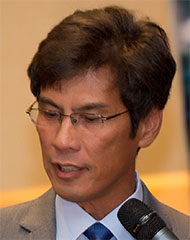
Dinh Nguyen
Dinh Nguyen (AOT-AE) was cited “For an outstanding record of innovation and contribution to the initial development of high-brightness photo-injectors, early experimental validation of self-amplified spontaneous-emission theory, and high average current injectors.” The APS Division of Physics of Beams nominated him. He received a PhD in chemistry from the University of Wisconsin – Madison. Since joining the Laboratory in 1984, he has performed pioneering work in single molecule detection, up-conversion solid-state lasers, RF photoinjectors, advanced photocathodes, and high-gain amplifier free electron laser (FEL) concepts such as the self-amplified spontaneous emission (SASE) and regenerative amplifier. His high-gain SASE experiments in 1997 were the first in a series of experiments that have culminated in the first x-ray FEL at SLAC. His current research includes the development of high-power FEL, high-average-current RF injectors, rugged photocathodes and new ideas of hard x-ray FEL.
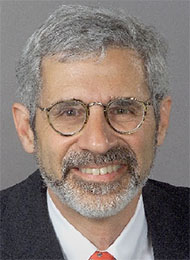
Alan S. Perelson
Alan S. Perelson (Theoretical Biology and Biophysics, T-6) was cited “For seminal contributions to the development of dynamical models of HIV infection, for elucidating therapeutic responses of HCV, and for helping found the fields of viral dynamics and theoretical immunology.” The Division of Biological Physics nominated him. Perelson received a PhD in biophysics from the University of California – Berkeley and joined the Lab as a staff member in 1974. He was one of the original four staff members who founded the Theoretical Biology and Biophysics Group (T-10). Perelson later became T-10 Group Leader, a Lab Fellow, and a Senior Fellow. His investigates how the immune system works and examines methods to cure infectious diseases such as HIV and hepatitis C virus infection. He has published more than 500 papers. Awards include membership in the American Academy of Arts and Sciences, Fellow of the American Association of the Advancement of Science and the Society for Industrial and Applied Mathematics, and a NIH MERIT award. Perelson holds Adjunct Professorships at the University of New Mexico, Boston University, and University of Rochester; and he is an External Professor and on the Science Board at the Santa Fe Institute.
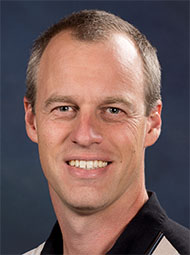
Filip Ronning
Filip Ronning (Condensed Matter and Magnet Science, MPA-CMMS) was cited “For experimental contributions to understanding strongly correlated electron phenomena, particularly in cuprate and heavy-fermion systems.” The APS Division of Condensed Matter Physics nominated him. He received a PhD in physics from Stanford University and joined the Laboratory as a Reines Distinguished Postdoctoral Fellow in 2003. The Lab converted him to staff in 2006. His research investigates novel states of matter, including unconventional superconductors and strongly correlated topological materials. Ronning has more than 200 publications with over 5,500 citations.
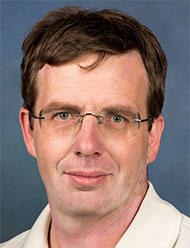
Andy Saunders
Andy Saunders (Subatomic Physics, P-25) was cited “For contributions in developing proton radiography and the LANL ultra cold neutron source, enabling new applications of nuclear science and an improved understanding of the decay of the free neutron.” The APS Division of Nuclear Physics nominated him. He received a PhD in physics from the University of Colorado and joined the Lab as a postdoctoral researcher in 1998. Saunders has participated in the development of proton radiography (pRad) since the early demonstration experiments conducted at Brookhaven National Laboratory in 1997. He has led the Los Alamos pRad imaging capability since 2013 and served as the radiographer in charge of executing over 150 explosively-driven dynamic experiments at LANSCE for the weapons program, for which he is now developing new techniques in charged particle radiography. Saunders also participated in the design and construction of LANL’s Ultracold Neutron Facility (UCN), which uses the LANSCE proton beam to produce ultracold, slow-moving neutrons that enable fundamental physics measurements of unprecedented precision. He is co-spokesperson of a project measuring the average lifetime of the free neutron. Saunders has been honored with nine NNSA Defense Program Awards of Excellence and five LANL Distinguished Performance Awards.
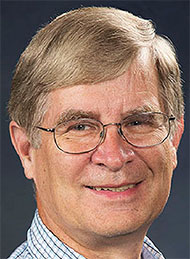
Glen Wurden
Glen Wurden (Plasma Physics, P-24) was cited “For innovative approaches to plasma diagnostics applied to a wide variety of fusion confinement concepts, ranging from reversed field pinches to tokamaks to magneto-inertial fusion.” The APS Division of Plasma Physics nominated him. He received a PhD in astrophysical sciences/plasma physics from Princeton University and joined the Laboratory in 1982 as a J. Robert Oppenheimer Postdoctoral Fellow. He leads P-24’s Magnetized Plasma team, which uses a wide range of plasmas and plasma diagnostic techniques to understand complex processes in hot fusion plasmas. Wurden collaborates with the Massachusetts Institute of Technology and the Air Force Research Laboratory on tokamaks and magnetized target fusion projects, and he fields optical diagnostics on the long-pulse Wendelstein 7-X stellarator in Germany.
Chemistry
Developing longer-lived isotopes for medical diagnostics
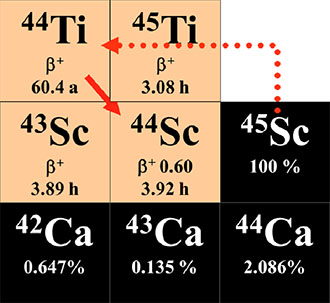
Figure 1. Production and decay pathway for the generator system 44Ti/44Sc.
The Laboratory irradiates targets at the Isotope Production Facility to produce isotopes for medical applications. Some isotopes are used in radionuclide generator systems to supply short-lived isotopes for medical imaging or therapy. A generator is a self-contained system housing a longer-lived parent isotope and a shorter-lived daughter. The daughter can be periodically extracted on site as needed, leaving the parent behind to generate more daughter. Generators are a convenient way to make short half-life isotopes available due to their cost effectiveness and independence from accelerator or nuclear reactor facilities.
Some generator systems can produce short half-life isotopes for Positron Emission Tomography (PET) medical imaging. For example, the germanium-68 (68Ge)/gallium (68Ga) system provides 68Ga (half-life of 67.6 minutes). The 68Ga can be attached to targeting biomolecules via bifunctional chelating agents to image cancer and infection. LANL and Brookhaven National Laboratory routinely produce the parent radionuclide 68Ge (half-life of 270.8 days) for the generator.
Researchers have proposed the titanium-44 (44Ti)/scandium-44 (44Sc) pair (Figure 1), to make available the PET isotope 44Sc (half-life of 3.97 hours). This system shows similarities to 68Ge/68Ga, but it also exhibits significant differences. The 44Sc half-life is almost four times that of 68Ga. The longer half-life could enable tracking slower biological processes and permit more complex radiopharmaceutical preparations post-elution. The 44Ti half-life of roughly 60 years could provide a long-term radionuclide source for the daughter 44Sc. However, such a long half-life creates economic and engineering challenges due to the large quantity of long-lived 44Ti that must be secured on the generator column. High 44Ti activities also require high particle beam currents and long irradiation times.

Photos. Scandium target before (left) and in a hot cell after irradiation (right).
LANL and Brookhaven are examining the production of parent 44Ti at quantities to make pre-clinical and clinical evaluations of 44Sc as a PET agent possible. The team performed two proton beam irradiations of natural abundance scandium metal targets at LANL’s Isotope Production Facility during the 2014-15 run cycle. Lower proton energies maximized the efficiency of the 44Ti reactions. The irradiations produced more than 10 mCi of 44Ti, a significant amount compared with current worldwide stocks. In parallel, Brookhaven is working on the design and fabrication of additional proton beam targets for the future bulk manufacturing of 44Ti activity.
Accumulated 44Ti must be chemically recovered from the irradiated scandium target. The team used the first target to develop chemical separation methods to isolate microgram quantities of 44Ti from many grams of scandium. LANL and Brookhaven research indicates that ion exchange column chromatography would be the most efficient separation technology. The scientists are optimizing the chemical separation. After isolation and purification from byproduct radionuclides, long-lived 44Ti will be fixed to a solid support for the repeated elution of daughter nuclide 44Sc. The researchers are considering different extraction systems to ensure long-term sorption of 44Ti and near-quantitative recovery of the in-grown 44Sc imaging isotope. The team plans prototype sorption systems to evaluate performance and 44Ti breakthrough evaluation, the two main parameters determining the quality of a radionuclide generator design. Once the team has found and demonstrated a successful system, test generators could be made available for 44Sc labeling and biological studies.
Los Alamos researchers: V. Radchenko, J. W. Engle, J. R. Maassen, C. M. Naranjo, F. M. Nortier, and M. E. Fassbender (Inorganic, Isotope and Actinide Chemistry, C-IIAC); E. R. Birnbaum and K. D. John (Science Program Office-Office of Science, SPO-SC).
The DOE Office of Science, Nuclear Physics via the Isotope Development and Production for Research and Applications Program funded the work, which supports the Lab’s Global Security mission area and the Materials for the Future and Nuclear and Particle Futures science pillars through the development of isotopes for medical applications. Technical contact: Valery Radchecko
Earth and Environmental Sciences
2012 Sumatra Earthquake triggers elastic response in Japan
Seismic waves from earthquakes can trigger other earthquakes, tremor, slow slip, and changes in pore pressure. In an article published in Science Advances, Geophysics (EES-17) researchers and Japanese collaborators showed that earthquake triggering is one manifestation of a more widespread elastic disturbance that reveals information about the Earth’s stress state. This stress state is central to our understanding of both natural and anthropogenic-induced crustal processes.
A traditional view of earthquakes is that of a fault with static elastic properties loaded slowly and steadily until it exceeds its failure stress threshold to cause an earthquake. However, the research team describes the Earth as a dynamic and interconnected system where a large earthquake can initiate a cascading sequence of responses over 1000 km away. Dynamic stresses from seismic waves can influence the nature and timing of crustal deformation by perturbing elastic properties.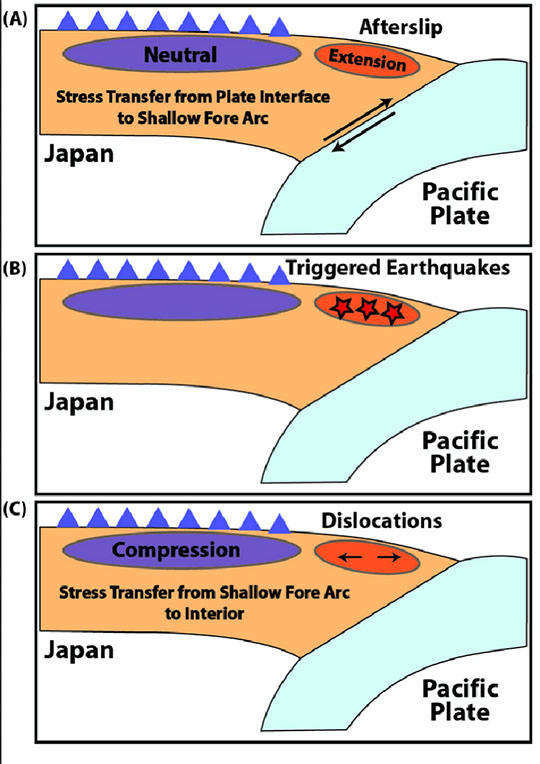
Figure 2. (A to C) researchers’ interpretation of the seismic phenomena observed at Honshu Island. Cycle of stress transfer from (A) plate interface to shallow fore arc, (B) resulting in normal faulting earthquakes, and (C) stress transfer to interior Honshu Island. Blue triangles represent Hi-net stations. Red stars are normal faulting earthquakes.
The 2011 magnitude 9 Tohoku earthquake in Japan and the associated afterslip occurring on the plate boundary transferred stress from the plate interface to the upper plate, which is manifest as extensional stress (Figure 2). Many faults in this region became critically stressed, in a period of elastic instability during which the faults are near failure. Scientists have known that these critically stressed faults can be triggered by transient stress perturbations like seismic waves.
In this paper, researchers studied seismic waves from the 2012 magnitude 8.6 Sumatra earthquake by analyzing GPS, strain meter, and short period seismic data recorded in northeast Japan in the days following this massive earthquake. Their analyses reveal that when seismic waves from the Sumatra earthquake passed through these critically stressed faults, they further destabilized the faults and caused failure. This phenomenon triggered the initiation and systematic migration of offshore seismicity, strain transients, and velocity transients.
When faults fail in extension, adjacent regions are loaded in compression to accommodate the extra space needed. After seismic waves from the Sumatra earthquake passed, a transition from neutral stress to compressive stress was observed onshore Honshu Island and intrinsic seismic velocities recorded across the island increased at the same time. The team interprets this as a result of the closing of cracks due to compressive stress, which increases the shear strength of the crust.
A broad, dynamically induced effect at a large distance from an earthquake source had not been observed previously. The study supports the hypothesis that broad regions of the Earth’s crust may
be perturbed by dynamic stresses. This can lead to cascading elastic effects where crustal material is forced into a metastable state, followed by a slow dynamical recovery to either the original or a new equilibrium state. Strain focusing may occur in fault zones where effects are expected to be larger than in the surrounding bulk rock mass. The team observed similar phenomenon in their laboratory experiments in bulk and fractured materials. The authors suggest that the influence of a perturbation may be highly heterogeneous and favor highly damaged regions associated with faults. The researchers noted that similar effects are induced from quasi-static (and potentially dynamic) induced stress changes in aftershock regions of earthquakes.
The researchers aimed to use the Earth’s response to natural perturbations to infer the elastic properties and stress state of the crust. Both quasi-static and transient stresses play a vital role in earthquakes and crustal deformation, and faults themselves can strengthen or weaken due to changes in pore pressure or the shear strength of granular material within the fault zone. Over short periods of time, the loading rate of transient stresses or the rate in which the strength of faults change can greatly exceed the tectonic loading rate and play an important role in how and when faults fail. Characterizing the full elastic response to wave disturbance through the use of field, laboratory, and simulation studies will ultimately impact our understanding of earthquake nucleation, triggered earthquakes, earthquake forecasting, induced seismicity associated with hydraulic fracturing, and seismic hazards in addition to improving our understanding of the state and behavior of Earth’s elastic systems at all scales.
Reference: “Cascading Elastic Perturbation in Japan Due to the Mw 8.6 Indian Ocean Earthquake” Science Advances 1 (9), e1500468 (2015); doi:10.1126/sciadv.1500568. Authors: A. A. Delorey and P. A. Johnson (EES-17), K. Chao and K. Obara (University of Tokyo).
The Smithsonian website featured this work in October: http://www.smithsonianmag.com/science-nature/big-quakes-can-trigger-other-shakes-thousands-miles-away-180956985/?no-ist
The Laboratory Directed Research and Development (LDRD) program funded the research, which supports the Laboratory’s Energy and Global Security mission areas and the Information, Science, and Technology mission areas. Technical contact: Andrew Delorey
Experimental Capability Enhancement
Automating x-ray imaging applications with robotics
Non-Destructive Testing and Evaluation (AET-6) and The University of Texas – Austin have developed a flexible sample positioning system for x-ray radiography and computed tomography (CT) non-destructive testing (NDT) measurements at the Laboratory. Manual NDT inspection of numerous components is time consuming and poses a risk of radiation exposure to the operator. Installing a robot in a x-ray or neutron imaging facility to perform part placement in the beam could significantly reduce radiation dose.
The team used a computer-controlled industrial robot with 7 degrees-of-freedom and a 225 keV micro-focus x-ray source. The robot and a flat panel digital detector communicate with one another autonomously to make an image. The robot picks up objects to be imaged, positions them in the beam, and places them back down. The system repeats the process for multiple samples. Combining robotics and automation reduces personnel exposure, improves precision alignment, and improves throughput.
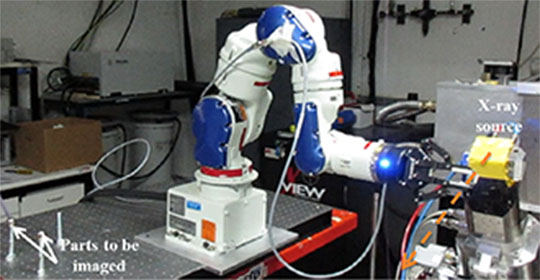
Photo. The part positioning system installed in the open air x-ray bay at the Lab’s TA-8 area.
The system can run autonomously as well as in teleoperated mode to give technicians the ability to position samples without entry into potentially high radiation areas. A flexible robotic system enables a single system to image various sizes and shapes of parts for radiography and computed tomography. This six-axis sample positioning capability can be deployed on x-ray and neutron beam lines for unclassified and classified object imaging. The work advances the capability of autonomous manipulation systems for radiography and computed tomography NDT applications.
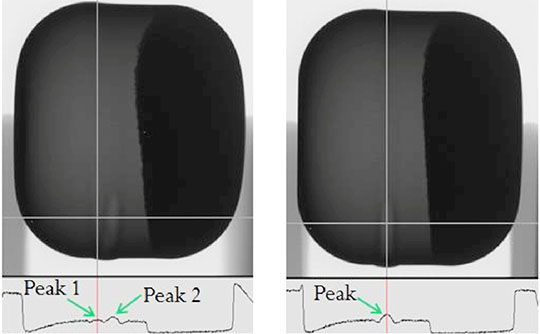
Figure 3. Alignment capability of the robot to align a part’s weld with the detector. The left radiograph shows the weld not aligned; the right radiograph shows the weld aligned with the detector. The intensity transmission plots are displayed below each radiograph. When the weld is not aligned, two peaks are visible, whereas only one peak is visible when the weld is aligned. These transmission histograms can be used to autonomously align the part with the robot. The radiographs were taken using a 225 keV micro-focus x-ray source at TA-8.
Materials Physics and Applications
High-speed fiber Bragg grating measurement of extreme material dynamics
Lab researchers developed and demonstrated a novel fiber Bragg grating (FBG) interrogation system for dynamical extreme conditions. The system can be used ions where traditional fiber Bragg grating sensing approaches are too slow to capture the events. An Optical Society of America “Spotlight on Optics” article in Optics Express called this “an important step towards real-time measurement and analysis of process dynamics” for understanding material behavior in extremes.
Fiber Bragg grating based sensors are used for research and commercial measurements of strain, temperature, and pressures. The sensors provide a good basis for distributed sensing because their operational modality is rooted in multiplexing approaches from optical telecommunications technology. However, much less is known about their performance in high-speed dynamic events that push the limits of FBG sensing to extreme environments under sub-microsecond transient loading conditions where both sensor and readout rates demand performance currently unavailable commercially.
In the Optics Express article, George Rodriguez (Center for Integrated Nanotechnologies, MPA-CINT) and co-workers describe very fast sensors for difficult environments, such as time-resolved ultrahigh magnetic field measurements and pressure dynamics analysis in thermal ignition of explosives. The general response of an FBG to temperature, strain and pressure is well known. The team’s key advance was the development of high speed (100 MHz) interrogation rate methods surpassing previously existing interrogation speed techniques by several orders of magnitude. This development enables real-time diagnosis of dynamical events. The investigators use a broadband pulse from an ultrafast mode locked fiber laser to probe the FBG. The team mapped the spectral response of the FBG into time using a long dispersive fiber on a single element photodetector coupled to a transient digitizer. This method allows the researchers to capture the optical spectrum of the FBG sensor at the repetition rate of the 100 MHz laser source approach. The approach enables FBG strain and pressure sensing on experiments with 10 ns resolution. Moreover, the FBG sensor has an unobtrusive small diameter and noise-free isolation from other electrical based diagnostics.
Two examples demonstrate this interrogation technology in dynamical extreme conditions. 1) The team applied this technique to measure the dynamics of the strain in a magnetostrictive material at extremely high magnetic fields (approximately 150 T) produced at the National High Magnetic Field Laboratory (NHMFL). The system’s high time domain allows the observation of acoustic effects and phase transitions in the material. 2) The researchers conducted pressure measurements during the thermal ignition of the high explosive PBX9501. The high temperature and material flow that occurs during the sub-sonic blast have previously made such measurements challenging. The new technique enables observation of material phase changes. Different process phases such as heating and pressurization can be observed and analyzed in detail. The example measurements would not have been possible with traditional FBG interrogation approaches that are too slow to resolve such events.
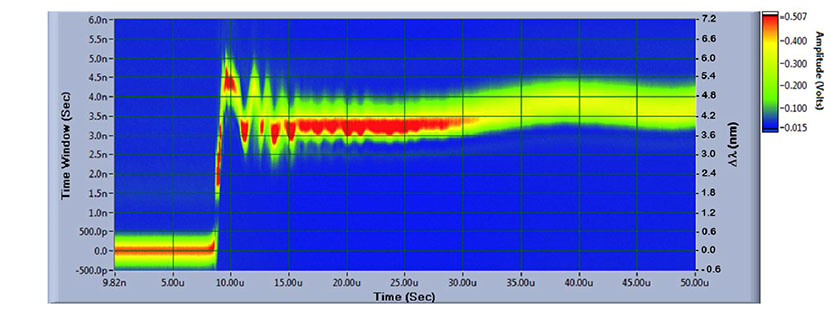
Figure 4. An example plot of processed coherent time domain FBG waveform data from a pulsed magnetic field (150 T) driven magnetostriction strain experiment on the 2-mm long magnetic perovskite LaCoO3 system followed by launch of an acoustic wave after elongation of the sample. The graphic shows a time-time plot of the 1555 nm 1-mm FBG sensor versus for 50.036 km of dispersion. The left ordinate axis is a window of 6.5 ns within one laser clock period time slice (10 ns). The abscissa axis is the event time beginning from the trigger of the NHMFL single-turn capacitor bank and has not been time corrected for the various delays in the signal and trigger paths. Conversion of the left ordinate time axis into FBG wavelength shift yields a wavelength-shift time plot as shown in the right ordinate axis labels. A positive shift to longer wavelength indicates that the strain resulted in elongation of the sensor/sample combination. A mean FBG wavelength shift of over 4 nm is observed.
Reference: “Coherent Pulse Interrogation System for Fiber Bragg Grating Sensing of Strain and Pressure in Dynamic Extremes of Materials,” Optics Express 18 (11), 14219 (2015); doi: 10.1364/OE.23.014219, Optical Society of America “Spotlight on Optics” www.osapublishing.org/spotlight/summary.cfm?id=318940. Authors: George Rodriguez and Abul Azad (MPA-CINT), Laura Smilowitz and Bryan Henson (Physical Chemistry and Applied Spectroscopy, C-PCS) for the thermally driven explosives work, and Marcelo Jaime, Fedor Balakirev, and Chuck H. Mielke (Condensed Matter and Magnet Science, MPA-CMMS) for the strain measurement in an ultrahigh magnetic field. Early concept development for the approach was in collaboration with Brandon La Lone and Bruce Marshall from the Special Technologies Laboratory (National Security Technologies, LLC) in Santa Barbara, CA.
Laboratory Directed Research and Development (LDRD) and National Science Foundation NHMFL programs funded different aspects of the work. The National Science Foundation and the DOE Office of Science enabled the 100 T magnet capability at the NHMFL in Los Alamos. The research supports the Lab’s Nuclear Security mission area and Science of Signatures and Materials for the Future Science pillars by enhancing materials dynamics diagnostic capability for complex materials and energetic materials under conditions of extremes. It also enhances the Laboratory’s weapons physics experimental diagnostic capability. Technical contact: George RodriguezMaterials Science and Technology
Ben Morrow featured in young professional spotlight article
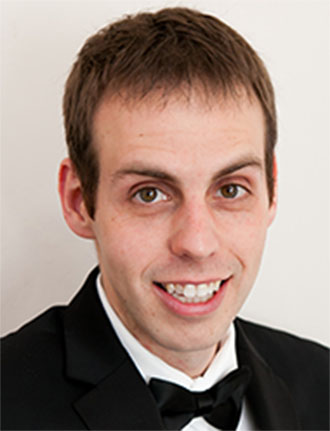
Ben Morrow
In a “Young Professional Technical Note,” the August issue of JOM featured Ben Morrow (Materials Science in Radiation and Dynamics Extremes, MST-8) and his structural materials research. The article and a corresponding technical paper on in situ straining of magnesium were part of a larger feature on advanced characterization techniques using electron microscopy. JOM is a publication of The Minerals, Metals and Materials Society (TMS).
The mechanical behavior of hexagonal close-packed (hcp) metals is complex due to their relatively low crystal symmetry (compared with cubic materials), and dependence on both twinning and dislocation slip for ductility. Twinning is an important aspect of plasticity in these materials, but the underlying mechanisms for twin nucleation, growth, and interaction with dislocations are still not completely understood. Los Alamos researchers have applied in situ mechanical testing using transmission electron microscopy (TEM) to characterize the motion of twin boundaries and study twin interactions with dislocations.
Investigators used a LANL-developed TEM in situ straining technique to probe the material and directly observe the mechanical behavior. It was previously known that the nucleation and growth of twins affected the dislocation structure, but the nature of the interaction and the mobility of the dislocations post-interaction were unknown. The team showed that new dislocations form inside the twins as they grow. This result challenges a common assumption that the dislocations are the result of the geometric conversion of dislocations outside the twins.
The work revealed that the dislocations are mobile despite the drastic change in dislocation character as a result of interaction with a twin boundary. This information is critical to calibrate strength models that rely on the appropriate representation of the activity and kinetics of plasticity mechanisms. Traditional post-mortem analysis techniques do not provide this data.
Morrow received a PhD from The Ohio State University. He researches structure-property relationships and the extreme environment of dynamic loading. He is a member of TMS committees, currently serves as vice chair of the Mechanical Behavior of Materials Committee, and has received a Young Leaders Professional Development Award.
Young Professional Technical Notes in an occasional feature highlighting the scientific interests and professional accomplishments of a young TMS member who has contributed to the technical content of the current issue of JOM as an author, advisor, or guest editor. The development of the feature is a special project of the TMS Young Professionals Committee.
References:
“Transmission Electron Microscope In Situ Straining Technique to Directly Observe Defects and Interfaces During Deformation in Magnesium,” JOM 67, 8 (2015); doi: 10.1007/s11837-015-1432-6. Authors: Ben Morrow, Ellen Cerreta, and Carlos Tomé (MST-8); and Rodney McCabe (Metallurgy, MST-6).
The DOE Office of Basic Energy Sciences funded this research, which supports the Laboratory’s Energy Security mission area and Materials for the Future and Science of Signatures mission pillars. Technical contact: Ben Morrow
Physics
MAJORANA DEMONSTRATOR begins search for neutrinoless beta decay
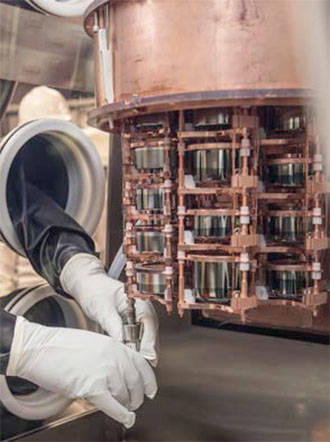
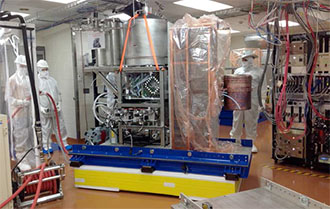
Photo. (Left): Assembly of the MJD Module 1 detectors in the nitrogen-purged glovebox. Several of the strings of germanium detectors hang in the copper cryostat. Photo Courtesy Sanford Underground Research Facility. (Right): Module 1 being moved on the air-bearing table from the glovebox to the shield.
The MAJORANA DEMONSTRATOR (MJD), located 4850’ underground in the Sanford Underground Research Facility in Lead, SD, has started its search for neutrinoless double beta decay. The MJD experiment studies the neutrinoless double beta decay of the nucleus in the isotope germanium-76 (76Ge). The observation of neutrinoless double beta decay would show that lepton number is violated and that neutrinos are Majorana particles. Observation of this process could provide valuable clues to why the universe is made of matter instead of antimatter and determine the mass of the neutrino. Neutrinos are fundamental particles that play key roles in the early universe, cosmology, astrophysics, and nuclear and particle physics.
The project aims to show that an extremely low background can be achieved equivalent to less than 3 counts from background per ton of germanium per year of operation in the energy region of a double beta decay signal. Achievement of this background would indicate that a larger-scale experiment capable of reaching a sensitivity of 15 meV for the neutrino mass would be feasible.
Researchers have moved the first full module into the lead/copper shield. Module 1 contains 21 detectors that have been enriched in 76Ge (total mass of 16.8 kg) and an additional 9 detectors composed of natural abundance germanium (total of 5.7 kg). The left Photo reveals the module during assembly with the detectors arranged in 7 strings. The team handles the detectors in nitrogen-purged gloveboxes to avoid exposure to radon in the air. The Lab designed and procured the gloveboxes in 2012. The right Photo shows the module when it was removed from the module glovebox prior installation in the shield. A module contains a cryostat with detectors, thermosyphon to cool the detectors, supporting liquid nitrogen system, electronics, pumping systems, and part of the lead and copper shield. The entire module weighs approximately 8 tons. Investigators use a mobile air-bearing table to move the module between the gloveboxes and the shield. The delicate movement of these systems was part of LANL’s contribution to the MJD project. Researchers use a thorium-228 (228Th) source in a track around the cryostat to calibrate the detectors in Module 1. The calibration system is another of LANL’s contributions to the project.
The team is assembling Module 2 with another 30 Ge detectors, and will move it into the shield in late 2015. A prototype module with 9 detectors operated in the shield from June 2014 to May 2015. It provided valuable background data to improve the design and construction for Modules 1 and 2.
The LANL MJD team in Neutron Science and Technology (P-23) includes spokesperson Steve Elliott, Pinghan Chu, John Goett, Ralph Massarczyk, Keith Rielage, Larry Rodriguez, and Wenqin Xu. Harry Salazar (Mechanical Design Engineering, AOT-MDE) designed the glovebox. In addition to LANL, a collaboration of approximately 100 scientists from Black Hills State University, Duke University, Institute for Theoretical and Experimental Physics, Joint Institute for Nuclear Research,
Lawrence Berkeley National Laboratory, Oak Ridge National Laboratory, Osaka University, Pacific Northwest National Laboratory, South Dakota School of Mines and Technology, Tennessee Tech University, University of North Carolina – Chapel Hill, University of South Carolina, University of South Dakota, University of Tennessee, University of Washington is constructing the experiment.
The DOE Office of Science, Nuclear Physics Program supports LANL’s research on MJD. The Laboratory Directed Research and Development (LDRD) program funded early R&D work that led to the successful proposal and experimental design. The work supports the Lab’s Nuclear and Particle Futures science pillar via studies of fundamental particles. More information: http://science.energy.gov/np/highlights/2015/np-2015-09-c/ Technical contact: Steve Elliott
Theoretical
Modeling alternate ideas for an HIV Vaccine
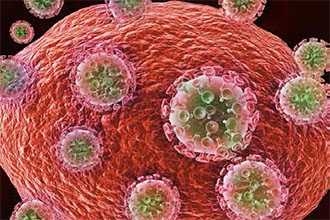
Figure 5. HIV viruses attacking a T cell.
Eliciting an immune response that can neutralize the large diversity of viral strains circulating in humans is a major challenge for developing an HIV type 1 (HIV-1) vaccine. Broad and potent monoclonal antibodies against HIV-1 have been discovered, which can neutralize a large fraction of a diverse panel of HIV-1 strains in vitro. However, their highly mutated nature and late emergence in infection make it difficult to determine how they arose. Thus, an effective HIV-1 vaccine is elusive according to Alan Perelson and Shishi Luo (Theoretical Biology and Biophysics, T-6). Harnessing the power of broadly neutralizing antibodies, which emerge years into a chronic HIV infection, could help overcome this challenge. The Lab team used a mathematical model to examine how broadly neutralizing antibodies coevolve with HIV-1. The Proceedings of the National Academy of Sciences published their findings.
Antibodies replicate at a rate that increases with the fraction of circulating virus they match. In contrast, viruses replicate at a rate that decreases with the fraction of circulating antibodies that match them. This response reflects the selective pressure for virus strains to accumulate mutations that evade antibody recognition. The selection in both these processes relies on diversity in the virus and antibody strains.
The Laboratory researchers simulated the co-evolution of multiple HIV-1 viral strains and antibody populations. The investigators conclude that broadly neutralizing antibodies emerge late in infection due to competition from the highly specific antibody response to the dominant founder viral strain.
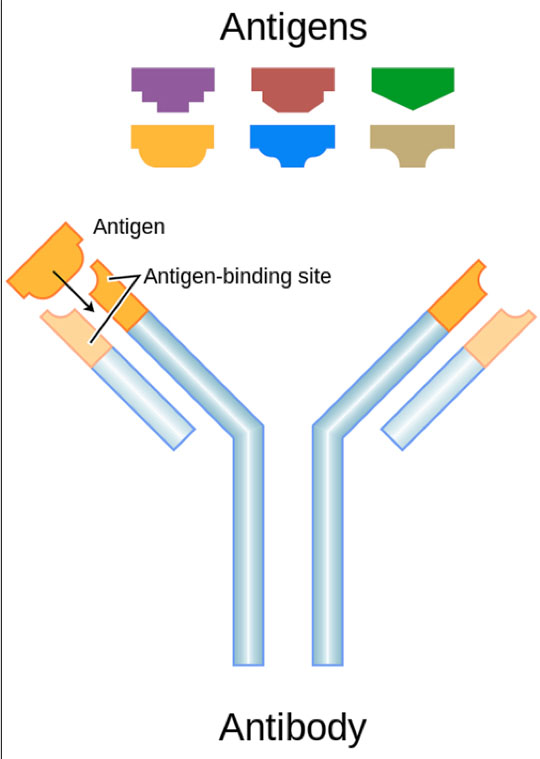
Figure 6. Schematic diagram of an antibody and antigens.
The results provide a proof of principle that a broadly neutralizing antibody response against HIV-1 could be elicited earlier than in natural infections. However, critical questions must be addressed before a vaccine based on this principle can be realized. 1) It is unclear how to design a vaccine that triggers adaptive immune dynamics similar to a real infection. 2) The question of whether broad antibodies require high levels of somatic mutation must be answered. 3) The competition between B cells that target different epitopes (section of the antigen that the antibody binds) must be better understood. Therefore, developing a vaccine via this strategy would require mapping the developmental pathway (necessary mutations) for broadly neutralizing antibodies and reproducing the pathway in a vaccine protocol to elicit an adaptive immune response comparable to that in real infections.
Traditional vaccine design is based on the premise that infection is protective, and a vaccine should thus mimic a natural infection. The new results suggest that an HIV-1 vaccine should instead present the host with multiple diverse strains. This is a highly non-natural scenario for early infections with HIV-1, except for intravenous drug use and blood transfusion transmissions.
Reference: “Competitive Exclusion by Autologous Antibodies Can Prevent Broad HIV-1 Antibodies from Arising,” Proceedings of the National Academy of Sciences USA 112, 11654 (2015); doi: 10.1073/pnas.1505207112.
The NIH and the Duke Center for HIV/AIDS Vaccine Immunology-Immunogen Discovery funded the work at Los Alamos. The LANL Center for Nonlinear Studies (sponsored by Laboratory Directed Research and Development, LDRD) provided postdoctoral funding to Shishi Luo. The work supports the Lab’s Global Security mission area and the Information, Science, and Technology and Science of Signatures science pillars through modeling and simulations of disease evolution and its treatment. Technical contact: Alan Perelson





